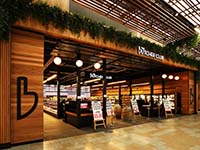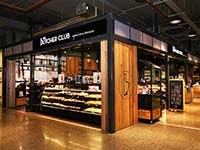Businesses in the food service industry should make sure their essential food ingredients will be stored optimally before they are used for food preparation.
One way to store delicate food products is to put them in refrigeration units. Most owners of businesses may opt for new refrigeration units. Others, however, may opt for refurbished ones, especially if they want to save some money. Refurbished commercial refrigeration units are preferred by many businesses as they are sold at a lower cost than new ones. These refrigeration units are likewise energy-efficient, sustainable, reliable, and customisable.
Many business owners, however, hesitate to buy refurbished units as they think they are not serviced properly. To remove any reluctance, here are some steps involved in refurbishing commercial refrigeration units.
Assess the Current Condition
The first step in refurbishing a commercial refrigeration unit is to assess its current condition. The assessment of this unit involves inspecting it for any signs of wear and tear, such as rust or corrosion, leaks, and broken or worn-out parts. Identifying any underlying issues affecting the unit’s performance like inadequate insulation, poor airflow, or faulty temperature control should be done so they can be serviced right away.
Clean the Unit Thoroughly
Once the unit has been assessed, the next step is to thoroughly clean it. The unit can be cleaned by removing any dirt, debris, or other contaminants found on the evaporator coils, condenser coils, fans, and other components. Using appropriate cleaning solutions and tools can ensure that the unit is thoroughly cleaned without causing any damage.
Repair or Replace Components
After the unit has been cleaned, any broken or worn-out components should be repaired or replaced. Some parts that often need replacement are compressors, motors, or fans. Other tasks that need to be done include repairing leaks and replacing damaged coils or pipes. The company servicing the unit should utilise high-quality replacement parts to ensure it will be restored to its optimal performance.
Inspect and Repair Insulation
One of the most vital factors affecting the energy efficiency of a refrigeration unit is the quality of its insulation. Poor insulation can lead to increased energy consumption and reduced performance, as the unit has to work harder to maintain the desired temperature. As part of the refurbishment process, the unit’s insulation must be checked and replaced if necessary.
Carry Out Upgrades
After repairing or replacing parts, certain components of a commercial refrigeration unit should be upgraded to improve its performance and energy efficiency. Some upgrades that can be done are installing energy-efficient compressors, motors, or fans, adding digital temperature controls, and switching the refrigerant system to an eco-friendlier option.
Test and Maintain the Units
After the unit has been refurbished, it should be tested and maintained to ensure it will work properly. These steps include monitoring the unit’s performance over time to ensure it retains the desired temperature and operates efficiently, cleaning it regularly, replacing its filters, inspecting components for wear and tear, and addressing any issues as soon as they arise.
All these steps confirm that refurbished commercial refrigeration units can still be maximised by business owners to store their products without any issues. As long as they come from a reputable provider, you can ensure they will work optimally.
Optimized by: Netwizard SEO




